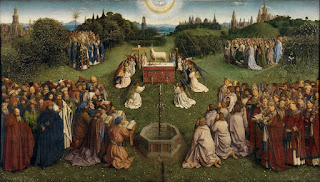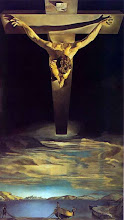It was a dark, stormy and very windy night when disaster struck the cemetery. As a cold rain hammered against the sodden earth, a howling gale overturned tombstones, blew down branches and sent cobwebs flying into the dank night air.
Lying in bed, Paul Hopkins heard the savage roar outside and feared the worst. Sure enough, as dawn broke, the Toronto man realized that his collection of carefully wrought Styrofoam grave markers had been devastated by the tempest. The final toll? About $2,000 in damages.
“I set up my cemetery about three weeks before Halloween to set the mood,” Mr Hopkins explains. “This has never happened before.”
He may now have to extend the week’s vacation he takes every year … before Hallowe’en to prepare his haunted house display, but Mr Hopkins, a purchasing agent for an aluminum smelter, vows he’ll repair the battered props before October 31.
Despite the setback, the bulk of his gear remains unscathed. Mr Hopkins estimates that his collection of talking skeletons, animatronic corpses, zombies and ghosts has cost him about $20,000.[1]
That’s an excerpt from an article I came across in the newspaper several years ago.
Hallowe’en is a multimillion-dollar business in Canada. According to one newspaper report, “Canadians have become so wild about Halloween we now spend more per capita on costumes, candy and décor than our U.S. counterparts do, with holiday-related spending that is second only to Christmas.”[2]
Last year October candy and snack food sales topped the $400 million mark. And if covid didn’t manage to put too much of a damper on things, the estimates were that four million kiddies should have been out on the streets last evening to fill their sacks with Hallowe’en goodies. And if your neighbourhood was anything like mine last evening, it was visited by dozens of strange miniature creatures: witches, ghosts, mummies, aliens, zombies—and perhaps a few little princesses and cuddly animals too!
Some people like to trace our Hallowe’en traditions back to the ancient Celtic festival of Samhain. But since the eighth century it has been for Christians All Hallows’ Eve, the night before All Saints’ Day. So it is that today we celebrate what we affirm with our fellow believers around the world in last two phrases of the Apostles’ Creed: the communion of saints and the life everlasting.
If you have a Bible nearby, I’d like you to turn with me now to the passage that was read a few moments ago: Revelation 7:9-17. I know that for many of us the Book of Revelation is strange, if not uncharted, territory. Its array of multi-headed creatures, stars falling from the sky, plagues and fearsome horsemen, make Hallowe’en seem like the child’s play that it is. Yet I want to affirm that a careful reading of Revelation can lead to untold riches. To do that we need to take into account its historical context. And we need to be careful not to be led astray by the false teachings that have plagued the church in almost every century since it was written. So with that in mind let’s turn to Revelation, chapter 7.
The Crowd
As we begin reading, we find that we are surrounded by an enormous crowd—a multitude, John tells us, greater than anyone could number.
Now to put this in context we need to go back into the earlier chapters of Revelation. And as we do, we find that this multitude has been growing. It begins with just four strange creatures that John describes as “living beings”. Day and night they give thanks to the One who sits on the throne in words that are familiar to many of us:
Holy, holy, holy
is the Lord God Almighty,
who was and is and is to come!
The fours are quickly joined by twenty-four others, whom John describes as elders. They too fall down and, laying their crowns before the throne, they cry aloud,
You are
worthy, our Lord and God,
to receive glory and honour and power,
for you created all things,
and by your will they were created
and have their being.
No sooner have they completed their refrain than John finds himself surrounded by an enormous chorus of angels, “numbering thousands upon thousands”—no, ten thousand times ten thousand. Now the word John uses here is “myriads”. In its literal sense it means ten thousand. But in fact it was the highest number in Greek and I think we could take it as the equivalent of our word “gazillion”. So we might say that what John witnessed around him was a gazillion gazillion angels chanting in unison,
Worthy is the
Lamb, who was slain,
to receive power and wealth and wisdom and strength
and honour and glory and
praise!
And if all that were not enough, they are joined by every creature on earth, who join in thunderous chorus singing,
To him who
sits on the throne and to the Lamb
be praise and honour and glory
and power,
for ever and ever!
As I read this I am reminded of Jesus’ parables about God’s reign. So many of them have to do with growth, from something as tiny and insignificant as a mustard seed, to a sizeable bush in which birds could even make their nests.
Now John gives us a picture of God’s reign in its fullness. And we find ourselves with him in the midst of a multinational, multiracial, multilingual crowd, all encircling the throne and crying aloud with a single voice,
Salvation belongs to our God,
who sits on the throne,
and to the Lamb.
Personally, I find it all overwhelming, as I am sure John did. I can never read these verses without finding myself deeply moved.
The Chorus
One of the great privileges of Christian faith is that it unites us with people from every corner of the globe. John was given this great vision that he recounts in the Book of Revelation in the final years of the first century. He was writing from the little island of Patmos off the Turkish coast. In the course of his lifetime he had witnessed the Christian faith fan outwards from Jerusalem to most of the Roman world, and possibly even as far away as India.
In our own day it is estimated that as much as half the world’s population has still to hear the good news of Jesus. At the same time, as the church appears to be in decline throughout much of western society, there is an explosive growth of Christian faith in other parts of the world, most notably in sub-Saharan Africa and southeast Asia.
One of the highlights of my years in Minnesota was to welcome more than a hundred refugees from Burma into our congregation. When they arrived, there were no more than a handful who could speak even a few words of English. Yet in spite of our inability to communicate, there was no question that we all shared a deep bond in Christ. Moreover, as we came to know them and to hear their stories, we discovered that they had a faith in Jesus that had sustained them through years of indescribable deprivation and persecution. Theirs was a faith that made ours seem shallow in comparison. And what a thrill it was last Sunday morning to hear from David Kromminga of a Kurdish immigrant inviting people into his Christian community!
Yet this is only one perspective of what the creed describes as “the communion of saints”—and it is a two-dimensional one at best. For our fellowship with other believers is not confined horizontally to the present. Rather, it is three-dimensional in that it also stretches vertically through history.
We must never lose sight of the fact that we share in faith—even more than that, we owe our faith—to women and men who over the course of years past have discovered in Jesus their hope and their salvation: to Bishop Walsham Howe and Edward Perronet and Edward Caswall, who wrote and translated the hymns of this morning’s service; to great Christian leaders and thinkers such as Mother Teresa, Martin Luther King, Dorothy Day, C.S. Lewis, Amy Carmichael, John Calvin, Martin Luther, Gregory the Great, Augustine, Athanasius, Irenaeus and Polycarp (to name but a few); to the millions over the years who chose to surrender their lives rather than surrender their faith in Jesus; and to the countless more whose names we may never know but who are known to Jesus. Indeed, they are engraved on the palm of his hand.
The Cross
Before we leave them, though, we need to take another look at John’s description of this vast, innumerable crowd. John tells us that they were holding palm branches in their hands. Throughout ancient Middle Eastern society palm branches were commonly used as a symbol of victory, joy, peace and eternal life.
But I don’t need to remind you that this is not the first time we see people waving branches of palm. There had been a previous occasion, which John would have remembered with vividness. For he himself had been there, accompanying Jesus as he travelled the road into Jerusalem for what would be the last time. And we all know how the crowds waved their branches of palm, exuberantly shouting, “Hosanna! Blessed is the one who comes in the name of the Lord!”
Now when you translate “Hosanna!” from Hebrew, it means something like “Save us, we pray!” But turn back to our passage from Revelation this morning. Notice that this time the crowd does not cry, “Hosanna!” (“Save us!”) but, “Salvation belongs to our God, who sits on the throne, and to the Lamb.”
Do you see the difference? It may seem small, but I think it’s significant. For those white-robed saints standing around the throne salvation is not a hope. It is not a prayer. It is a present reality. For God has accomplished their salvation, and he has done it through the sacrificial blood of the Lamb.
So it is that with them we are brought to the foot of the cross—not as a place of sadness and defeat, but as one of joy and victory. Not as a place of darkness and gloom, but where all the radiance of God’s eternal glory shines forth.
For the Lamb at the centre of the throne
will be our shepherd;
he will lead us to springs of living water.
And God will wipe away every tear from our eyes.
What we have read in these verses from the Bible this morning is but a snapshot of the mighty chorus among whom John stood, gathered around the throne of the Lamb. And the victory they shared is what we celebrate as we observe this festival of All Saints. As we do so, we find that our focus is not so much on the “saints” (and I suspect that is the last thing they themselves would want!). Rather, with them we fix our eyes on the one who sits on the throne in their midst—on the Lamb around whom we gather in unending praise. In the words of one of this morning’s hymns,
O that with yonder sacred throng
We at his feet may fall,
Join in the universal song,
And crown him Lord of all!


